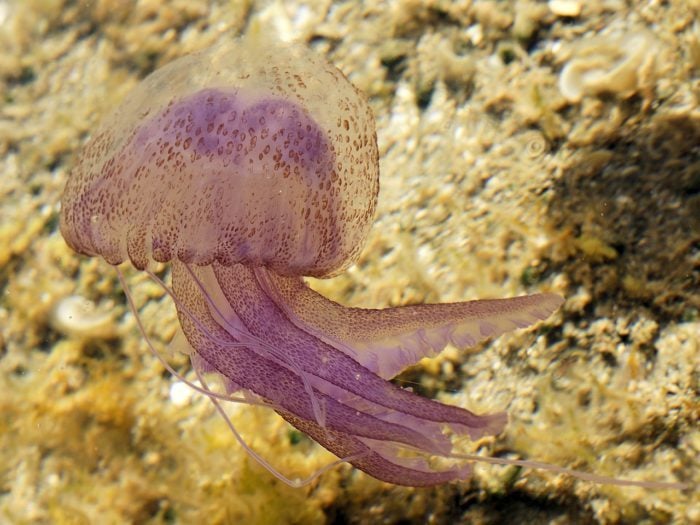
An explosion in the population of jellyfish along some of the beaches in Greece is causing concern for scientists and beachgoers this summer.
Experts are monitoring the proliferation of the Pelagia noctiluca, a purple jelly that carries a very painful sting in its long tentacles.
Sightings of large numbers of the purple jelly have been made in several parts of Greece, including the central and northern Aegean but also further south and particularly in the Saronic Gulf near Athens. Residents on Aegina say the problem was particularly acute last weekend, Greek daily Kathimerini reports.
The Pelagia noctiluca, which is found across the Mediterranean, has an average diameter of just 6 cm (2.3 inches). It is a pelagic species that reproduces in the open sea and drifts on the sea currents, reaching coasts and beaches.
Large populations of jellyfish periodically appear in Greece
Jellyfish typically eat small sea plants, shrimp, or fish and use their poisonous tentacles to stun prey before eating them.
Large populations of jellyfish appear in Greece at intervals of four to five years, similar to that observed in other Mediterranean countries.
In Greek seas, jellyfish typically remain for two to three years, and the period of their stay varies depending on the region and environmental conditions of the particular marine area.
Charitos Hintiroglou, a professor of Marine Biology at the Aristotle University of Thessaloniki, told Agency 104.9 radio recently that jellyfish populations increase periodically, and the phenomenon is still being studied. “We do not know for certain why they show this population increase,” noted Hintiroglou.
“It is a phenomenon that we have been observing for half a century; it is not something new. In recent years, every [four to five] years there has been an outbreak of varying size,” he added.
“Due to climate change and the prolonged increase in the average annual temperatures, we have phenomena that are becoming more and more frequent. Phytoplankton is growing at a rapid rate, providing plenty of food for zooplankton,” the professor said.
The compass jelly in particular has been found by multiple scientific studies to increase in population in warmer water temperatures.
Warmer water temperatures aid in the jellies’ reproduction cycles and allow for larger groups to swarm into the waters of Greece.
Related: Jellyfish Found in Greece are the Least Dangerous of All
See all the latest news from Greece and the world at Greekreporter.com. Contact our newsroom to report an update or send your story, photos and videos. Follow GR on Google News and subscribe here to our daily email!



